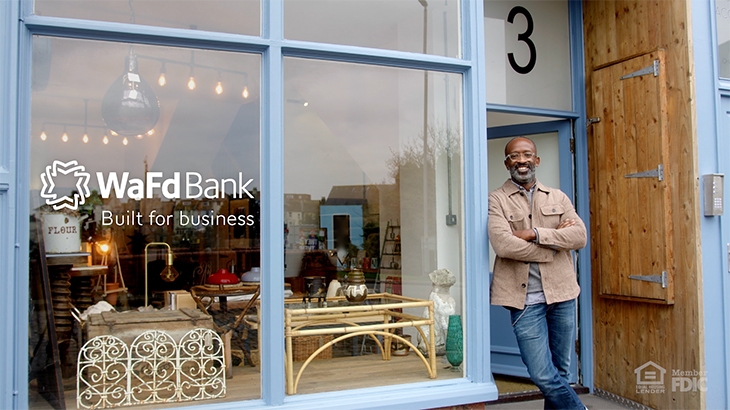What's the Difference Between SBA 7(a) and 504 Loans?
While both loans are backed by the Small Business Administration, they serve different purposes and are structured differently. There are a few key differences to consider when choosing the right one for your business.

What is an SBA 7(a) Loan Used For?
A 7(a) loan can be used for real estate financing, but it's primarily used for working capital (costs of day-to-day operations), startup costs, tenant improvements, buying an existing business, consolidating debt, and more. All costs associated with a 7(a) loan, including the SBA guarantee fee, can be included in the financing and are generally not required to be paid out of pocket.
What is a 504 Loan Used For?
The 504 loan was created to support and encourage small business growth and is designed specifically for buying, constructing, or refinancing fixed assets, such as land, buildings, heavy equipment, and real estate. This loan can only be used for owner-occupied properties. You can also include machinery, furniture, fixtures, signs, landscaping, and more in the loan, allowing you to retain more of your working capital for other uses. If you're buying or expanding an existing building or constructing a new one, this loan allows you to finance construction and closing costs, as well as soft costs. That means you can roll expenses such as architectural and engineering fees, surveys, title insurance, and more into the loan.
When is the SBA 7(a) Loan a Better Option?
The 7(a) is the most popular loan program and is an excellent choice for small business owners who wouldn't otherwise qualify for a conventional business loan. Other reasons to go with a 7(a) loan:
- Working capital is needed
- To refinance non-real estate related debt
- You are looking to purchase a business
- There is limited collateral to provide
- You have a tenant improvement project in a leased space
When is the SBA 504 Loan a Better Option?
While the 7(a) program can be used for real estate acquisition or refinance, the fixed rate feature of the 504 product is generally a better option. When financing real estate, it typically provides a 20- or 25-year fixed rate, whereas 7(a) rates are often variable in nature. However, there are a couple situations where a 7(a) may still be preferred when real estate is involved:
- If you plan to sell the property within the first few years because the prepayment penalties on 504 loans are much higher than 7(a)
- If you also need larger amounts of working capital or other non-real estate related funding in addition to real estate, it can work better to roll all of that into one 7(a) loan
Loan Structure
There are some key differences in the way these loans are structured:
7(a):- One loan from one lender
- The SBA guarantees up to 85% of the loan, depending on the amount
- In certain cases, the owner's personal real estate (residence or investment property) may be required to be pledged as additional collateral
- A 10% down payment is required for both startup and business acquisitions
- Has a two-part structure
- 10% owner equity (down payment; 5% more each required for a new business or special purpose property)
- 50% from a private lender (the bank)
- 40% from a Certified Development Company (CDC) and backed by the SBA
Differences Between SBA 7(a) and 504 Loans
This overview shows key differences between the two. If you have questions, work with your lender to understand your options and to help you decide which is best for your business.
| SBA 7(a) Loan | SBA 504 Loan | |
|---|---|---|
| Uses | Working capital, equipment, inventory, refinancing debt, expanding or purchasing an existing business, and more | Fixed assets, like land, buildings, major equipment, and real estate |
| Term | Up to 10 years for most uses, up to 25 years for real estate | 10, 20, or 25 years depending on the purpose of the loan |
| Flexibility | Flexible, you choose what to use it for but there are some restrictions | Semi-rigid, used for specific purposes |
| Prepayment Penalties | Varies, but declines as years pass | Varies, but declines as years pass |
| Size | $5,000 to $5 million | $250,000 to $15 million |
| Interest Rate | Variable or fixed depending on the lender, based on the Wall Street Journal Prime rate plus a spread that varies depending on the type of loan and lender | CDC/SBA Rate — Fixed Bank Rate — Varies from bank to bank, can also be fixed |
| Collateral | Required for loans over $50,000 — can require personal real estate to be pledged in certain situations | Asset purchased using the loan funds |
| Guarantees | Personal guarantees required from all owners of 20% or more | Personal guarantees required from all owners of 20% or more |
| Fees | Varies depending on loan size and includes both a lender and SBA fee. All closing and soft costs can be rolled into the loan | Varies depending on loan size and includes both fees for the lender, CDC, and SBA, all closing and soft costs can be rolled into the loan |
| Financing | One loan from one lender | Borrower provides 10% (can be higher as noted above), 50% is provided by the bank, and the last 40% is provided through a Certified Development Company and backed by the SBA |
WaFd Bank is Here to Help
Our knowledgeable business bankers are available to help you manage success and have the expertise to become a trusted advisor to you and your team. With products that grow with your business and comprehensive tools to seamlessly manage it all, WaFd Bank is built for business. After over 100 years, we know what it takes to help you succeed, from start to legacy. Visit your local branch or give us a call at 800-324-9375 to experience the difference WaFd Bank can make for you.
WaFd Bank is an SBA Preferred Lender in all nine Western states we serve including Washington, Oregon, Idaho, Nevada, New Mexico, Texas, California, Utah, and Arizona.
Loans subject to credit approval, terms and conditions may apply.
Did you find this article helpful? Share it!


